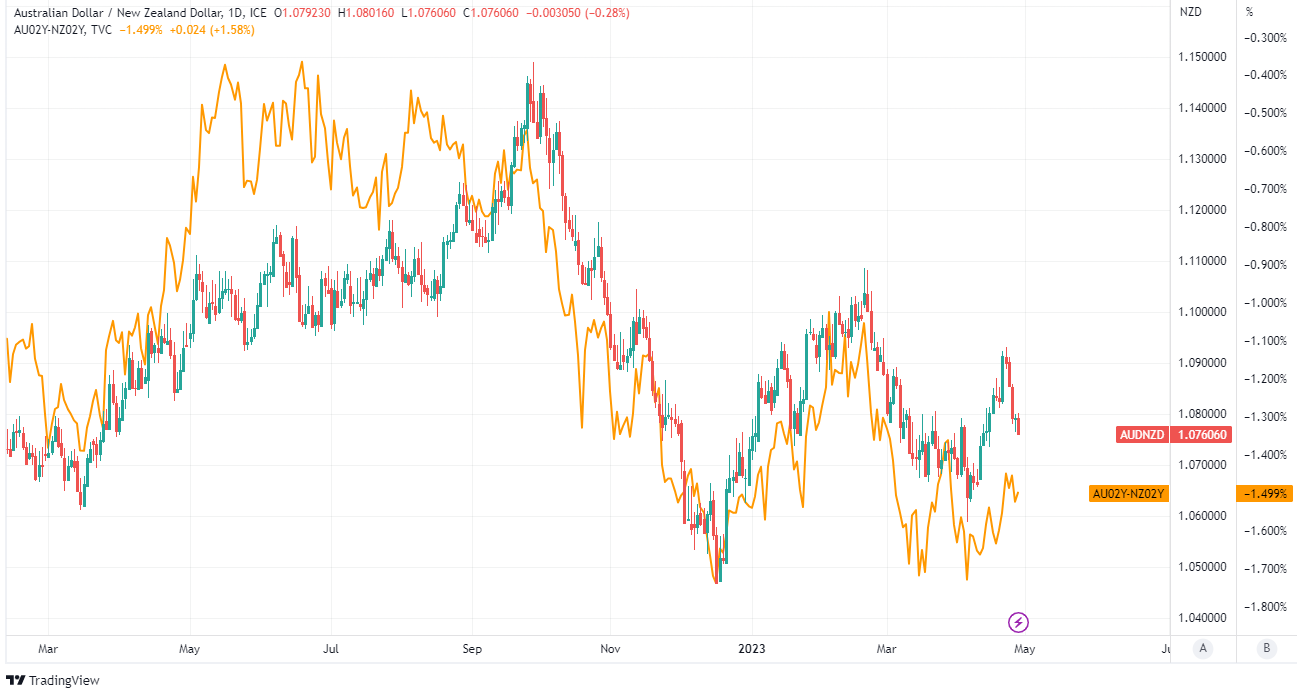GBP/NZD Rate "Precariously" High Says ANZ
- Written by: James Skinner
"The capital inflows may support NZD. But the boost to NZD is unlikely to be large" - Commonwealth Bank of Australia.

Image © Adobe Stock
The Pound to New Zealand Dollar exchange rate ebbed from one of its highest points for a number of years in the penultimate session of the week but remains at precarious levels amid an underperformance of antipodean currencies that is thought to have multiple drivers underlying it.
New Zealand's Dollar outperformed all major currencies on Thursday as well as many of the broader G20 grouping but remained near the bottom of the bucket for the week, month and year-to-date following losses that have gotten some locals wondering how much further it could fall.
"Given the Kiwi’s outperformance against AUD but staggering underperformance against EUR and GBP, it seems clear that markets are lumping AUD and NZD in the same basket," says David Croy, a senior FX strategist at ANZ.
"High interest rates are just not cutting it for the Kiwi, and instead markets seem focussed on the big picture: twin deficits, and generally shaky global risk sentiment," Croy writes in a Thursday market commentary.
 Above: Pound to New Zealand Dollar rate shown at daily intervals alongside EUR/NZD and AUD/NZD. Click image for closer inspection.
Above: Pound to New Zealand Dollar rate shown at daily intervals alongside EUR/NZD and AUD/NZD. Click image for closer inspection.
Compare GBP to NZD Exchange Rates
Find out how much you could save on your pound to New Zealand dollar transfer
Potential saving vs high street banks:
NZ$53.50
Free • No obligation • Takes 2 minutes
New Zealand's trade in goods deficit widened to a new record of NZ$1.3 BN in March, data from Statistics New Zealand showed earlier this week, making for a first-quarter deficit of NZ$5 BN and an annual deficit of NZ$ 16.4 BN.
All of this means more Kiwi Dollars being sold on the market than are bought but to the extent that this has been one of the various downward influences on the currency, it could grow larger later in the year amid a continuing reconstruction connected with February's natural disasters.
"Reinsurers are typically based in Europe. Foreign capital will flow into New Zealand later this year as claims are settled. The capital inflows may support NZD. But the boost to NZD is unlikely to be large," says Joseph Capurso, head of international economics at Commonwealth Bank of Australia, in a February note.
While the timing and amounts involved are uncertain, the reinsurance monies expected to flow from Europe would be denominated in Pound Sterling and Euro, and might act as a headwind for the GBP/NZD and EUR/NZD exchange rates.

Above: Change in primary market trading volumes on April 26 trading day. Data covers RUT and EBS platforms. Source: Goldman Sachs Marquee. (To optimise the timing of international payments you could consider setting a free FX rate alert here.)
There are other factors potentially weighing on Kiwi exchange rates including uncertainty about the outlook for the global economy and recent losses in Australian Dollar exchange rates, which are a large part of the trade-weighted or overall New Zealand Dollar exchange rate complex.
This was after Australian inflation fell heavily from 6.8% to 6.3% in March, leaving it sitting below the 6.5% suggested as likely by the economist consensus, while the quarterly inflation dipped from 7.8% to 7% in the first quarter but fell short of an economist consensus tipping a deeper decline to 6.9%.
"In Australia trimmed mean inflation (6.6% y/y vs 6.9% y/y exp) and the monthly CPI indicator for March (6.3% y/y vs 6.5% y/y exp) were both lower than we expected, supporting our view that the RBA will keep the cash rate at 3.6% in May," says Henry Russell, an economist at ANZ.
"Similar themes to New Zealand’s Q1 outturn were present with a large deceleration in tradables inflation, while non-tradables and services inflation remained strong. This indicates ongoing price pressures from excess demand in the domestic economy and will not assuage concerns inflation expectations could prove stubborn," Russell writes in a Thursday market commentary.
 Above: AUD/NZD exchange rate shown at daily intervals with spread or gap between 02-year Australian and New Zealand government bond yields.
Above: AUD/NZD exchange rate shown at daily intervals with spread or gap between 02-year Australian and New Zealand government bond yields.




